After writing a post about how to create an easy, budget friendly slow feeder for horses using an automotive floor mat, I wanted to see if the claim was really true. Here’s what happened.
The Car Floor Mat Slow Feeder
Update for October: If you haven’t checked out our ebook Safe Equine Enrichment, please consider giving it a read! This book takes a deep dive into the risks and safety concerns for equine enrichment. It’s a must-read if you like giving your equine friend enriching items and experiences. Purchase or read on Kindle Unlimited to make your enrichment safer and support this site!
I put up an article recently about using a car or truck floormat for a fast, simple equine enrichment item and slow feeder. With this neat barn hack, you can slow down your horse’s eating time. Check out the article link for full details, but the concept is simple. You repurpose a rubber floor mat from a car or truck into a textured feeding mat for your horse.
The floor mat slow feeder for horses promotes quiet and relaxed mealtimes in a natural way, says the blog post.
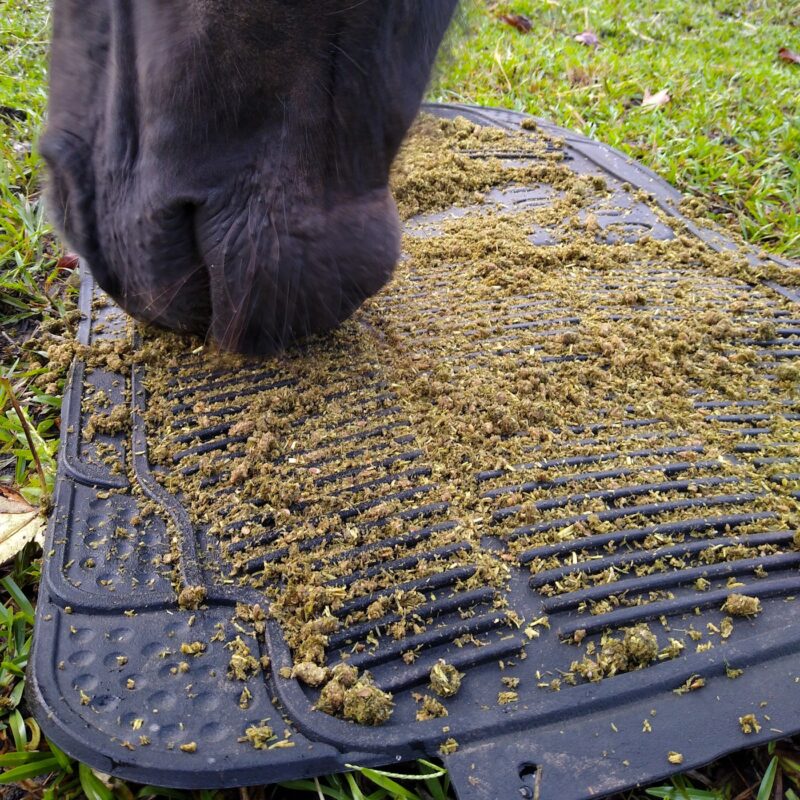
But is this claim TRUE? Does the floor mat slow feeder for horses really slow down equine meals?
Why Slow Meals Matter
Eating slowly is important for your horse for several reasons. It promotes better digestive health, encourages thorough chewing, and is the most natural way to eat.
Horses are grazing herbivores who forage for edible grasses, moving slowly across the land to crop bites of food. Grassland is the all natural slow feeder for horses! Because the wild ancestors of your horse didn’t usually find large, dense meals (the kind that people make and eat), they aren’t adapted to big servings of energy-dense feed.
Horses are adaptable and can eat a bucket of feed at one time. However, they use feed more effectively and have better digestive health when they eat more frequent small meals.

Photo by Tomáš Malík on Pexels.com
But food in a bucket provides a very dense source of nutrition that’s accessible all at once. The horse can take in all the carbohydrates, protein, and fat (and everything else) as fast as they can shovel down what’s in the bucket. If your horse needs a large amount of feed for best health, this may not be ideal. Too much feed eaten too fast increases the risk of choke and problems further down the digestive tract.
You might also notice that some horses trying to eat a big meal from a bucket seem tense or desperate to get all their feed. This is a kind of resource anxiety. It’s an emotional state that can be a response to sudden access to food, especially if the horse doesn’t have forage like hay available.
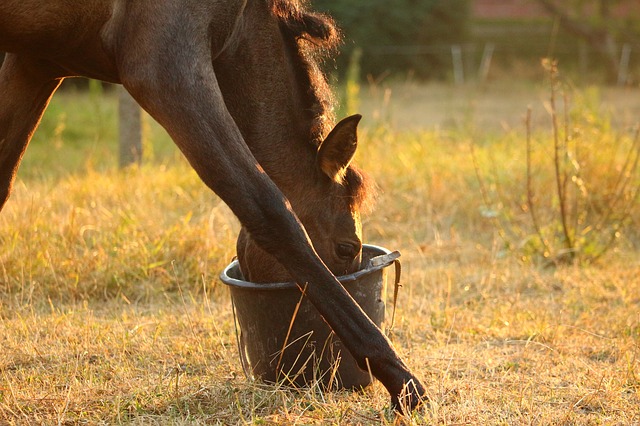
Image by rihaij from Pixabay
Because of this, you may be interested in slowing down your equine friend’s mealtimes. This is especially true if they need large meals or are prone to choke or digestive problems, or have anxiety related to food. Taking things slow and eating in a somewhat more natural way can be much better for body and mind.
Making Meals Slower for Horses
There are many ways to promote slow eating. This post is about “bucket meals” of processed food, but slowing down forage intake is also important. Check out the article on the ins and outs of hay nets if you haven’t seen it yet.
In addition to offering smaller meals more frequently (always better than one large meal), I like to use slow feed devices with horses to stretch out the meal time. Whether the horse’s meal is made of mostly forage like hay cubes or pellets, or whether they are receiving a pelleted feed, there are lots of creative ways to extend mealtimes.
In the floor mat slow feeder post you saw how an automotive rubber floor mat makes a fantastic textured slow feeder for horses. To recap, it’s big and sturdy, made a flexible rubber, and the treads give the horse texture to work around as they eat and helps hold the feed in place.
But does the floor mat actually slow down feeding time?
To find out, I decided to do an experiment.
Tiny Experiment on the DIY Slow Feeder Mat
To do this small science experiment, I measured how long it took this horse to finish meals from a bucket and from a mat:
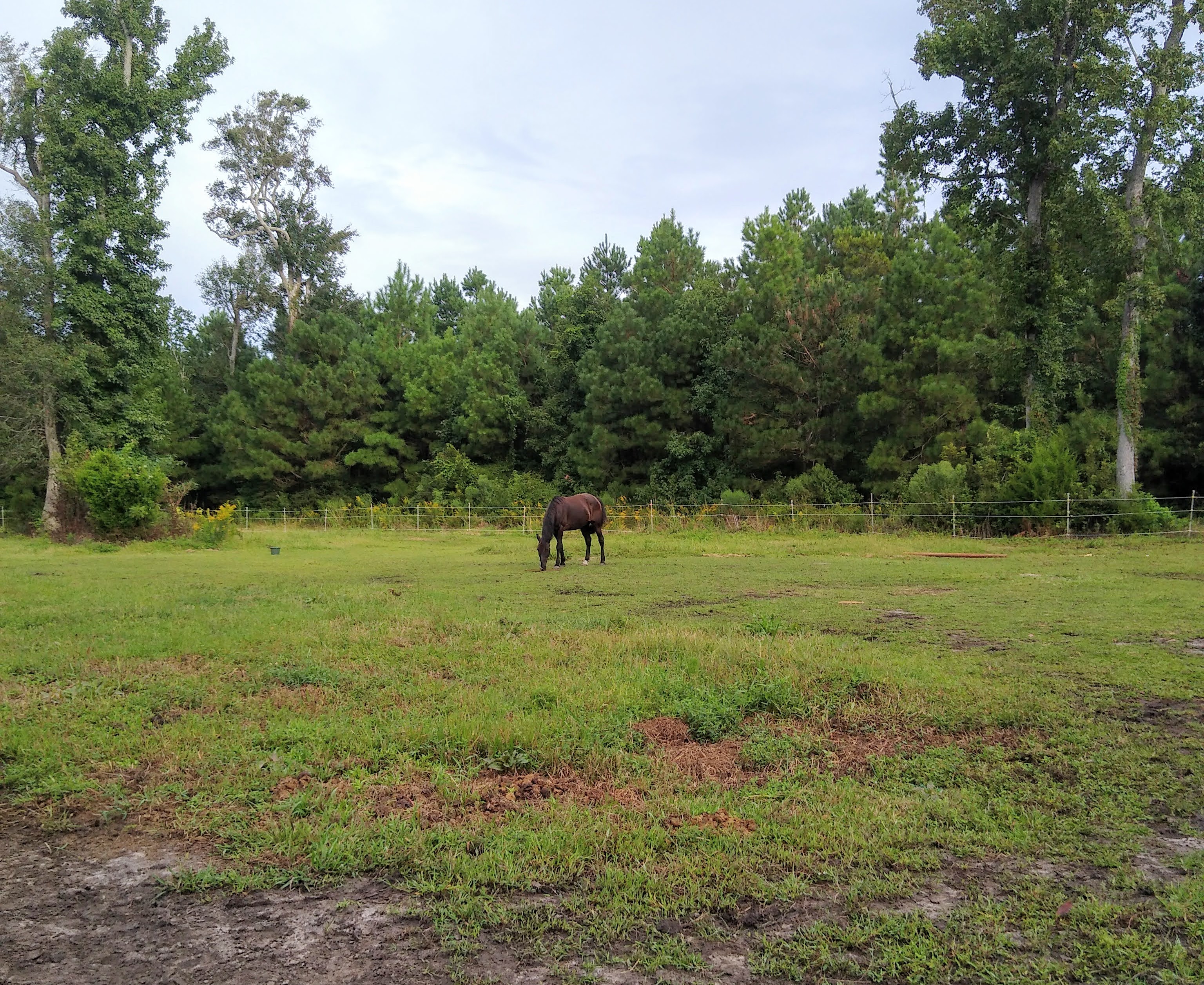
One horse isn’t a big research study. But I did want to get the most useable information possible, so I did this small experiment in a controlled way.
Over the course of a week, I weighed and measured out feed. Then I timed each feeding from the bucket followed by the rubber mat, or vice versa. All food was portioned out by weight and followed the same recipe each time: Triple Crown Balancer pellets, about two pounds of timothy hay pellets, and supplemental minerals. This was the test horse’s normal daily meal.
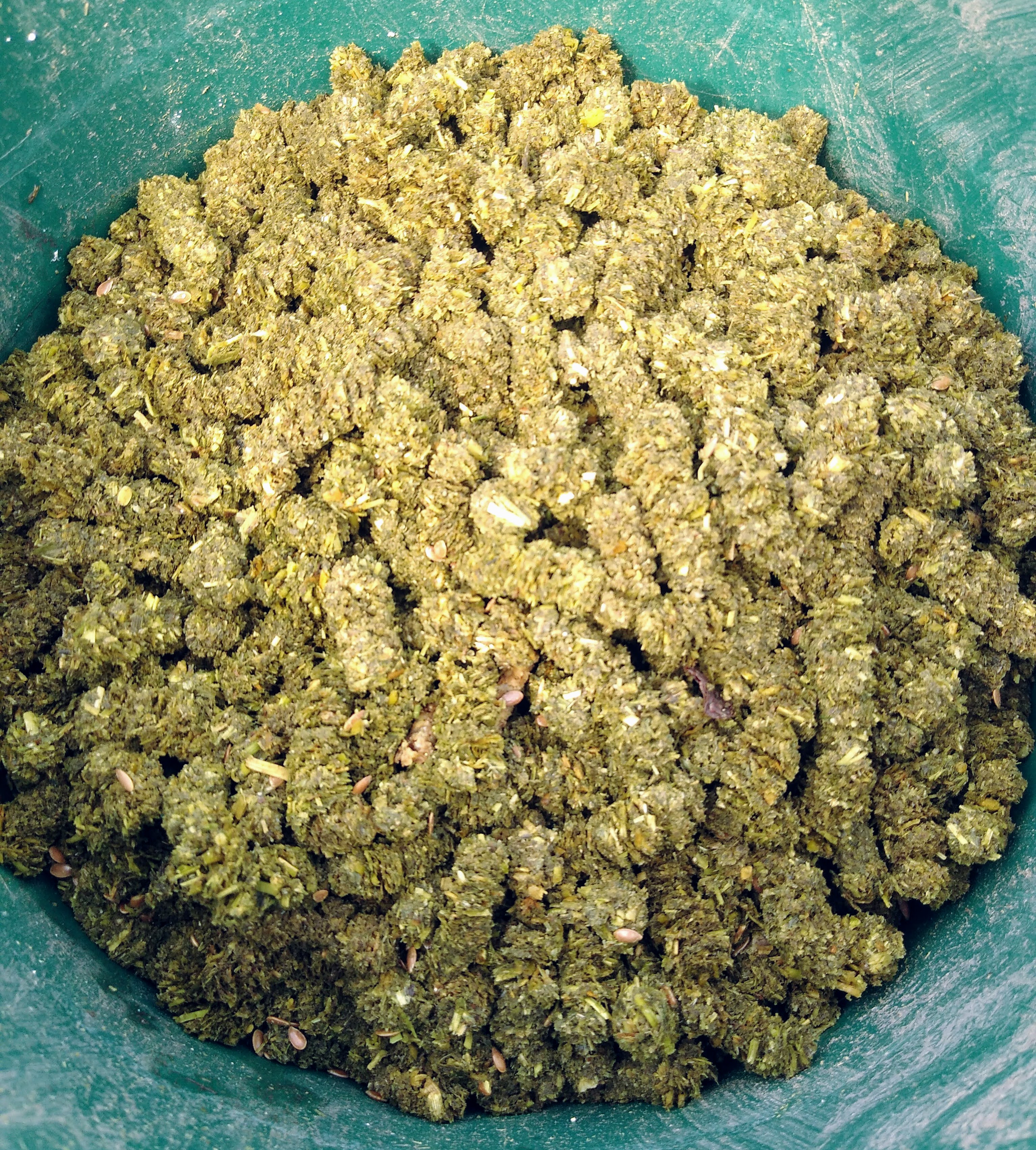
I prepared the meal as normal, including soaking the feed in just enough water to create a fluffy texture and expand the pellets. Because I’ve done several food preference tests with this horse, I know this texture is the one that my horse likes the best.
1. Measuring the Feed
I weighed the feed after soaking at each meal. When weighing out feed portions to formulate a good diet for your horse, it’s best to measure your feed dry because the water added will probably vary each time. This horse’s diet has already been calculated and converted into volume (scoops). For this experiment, taking the weight after the meal was prepared was important to make sure the portions on the mat and in the bucket were equal.
For this experiment, I weighed the finished product right before feeding so that I could divide the meal into exactly two portions. The hanging hay scale in the barn made this super fast and easy. Just hang the bucket, turn on the scale, way the feed, and portion it out into two equal amounts.
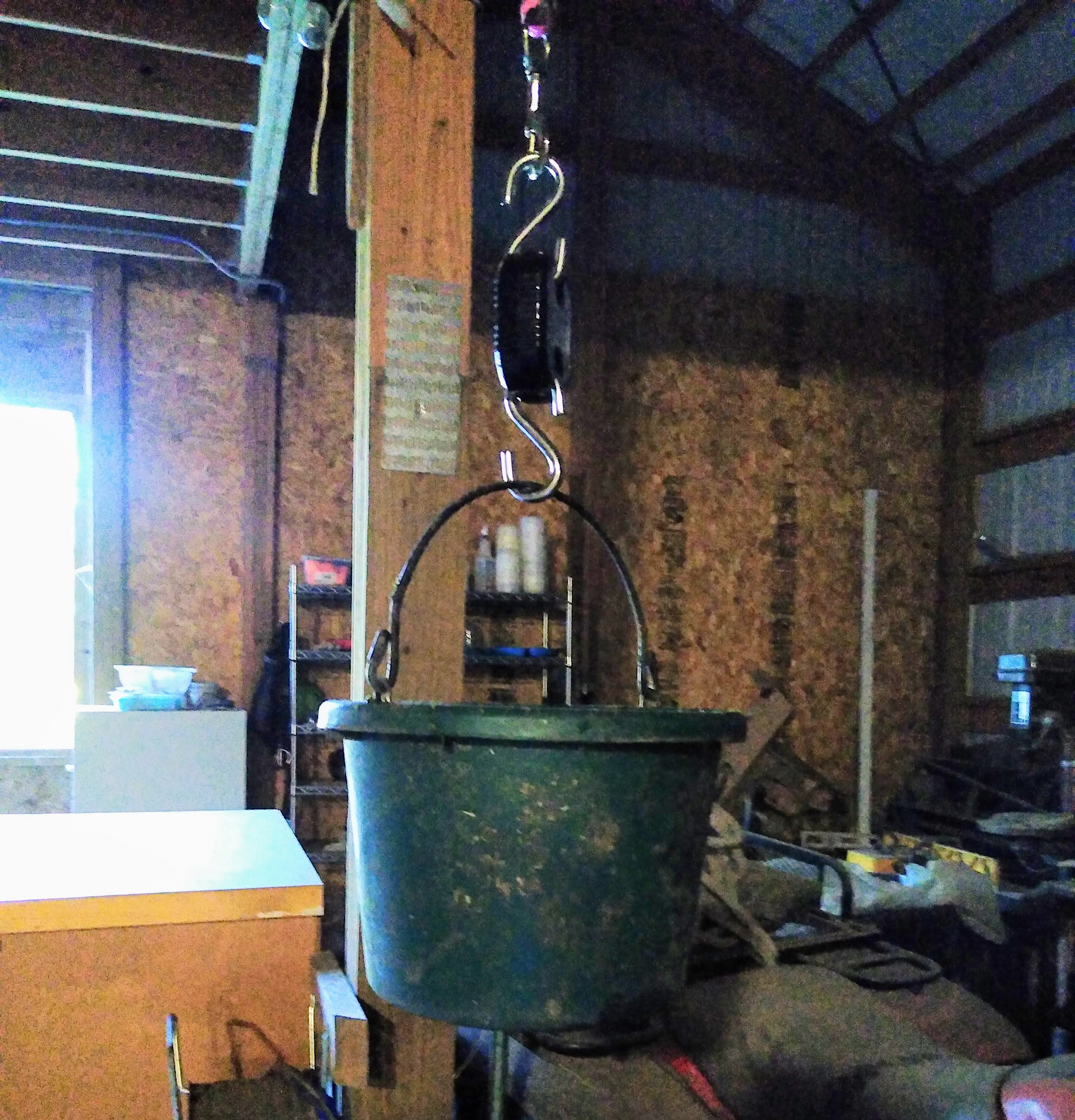
Even though the amount of dry feed was consistent, variations in the amount of water added changed the weight from meal to meal. For this tiny, unofficial barn experiment, I measured out two perfectly equal portions each time.
2. Timing the Meal
The horse ate half of his meal from one feeding option (bucket or mat) followed by the other.

I realized that the horse might simply eat his first meal fast and the second feed more slowly. To account for this, I flipped a coin each time to figure out which to use first. I kept every other pasture condition equal including having hay available. Timing started when the horse began to eat and ended when he walked away, usually to graze or visit his slow feed hay net.
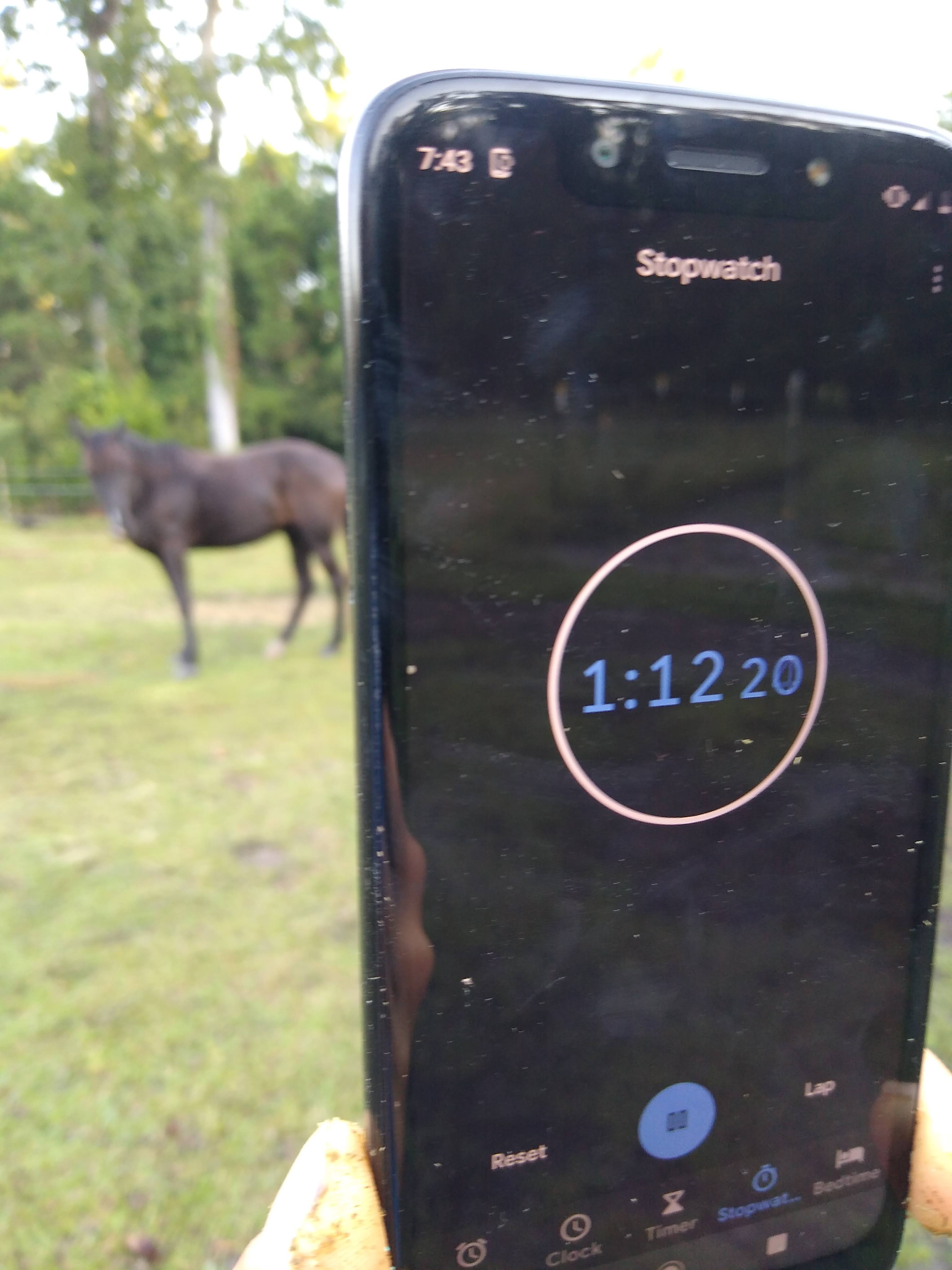
After timing five feedings over the course of a week, it was time for number crunching.
Which Feeding Method was Slower?
The quick results: for this horse, feedings from the mat were noticeably longer than meals from the bucket. Let’s look at the results.
In the first trial, the horse ate the bucket meal quickly, finishing all the food in just five minutes. The meal from the floor mat, on the other hand, lasted almost twice as long.
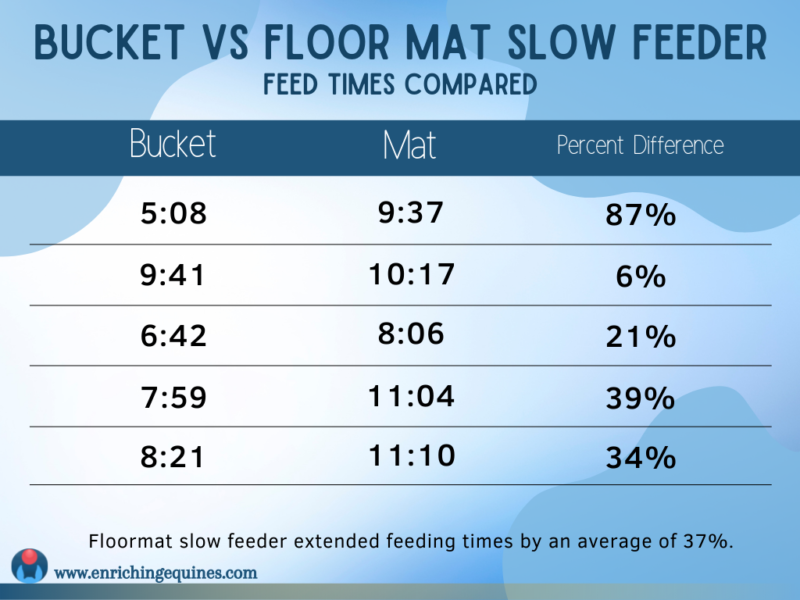
In the second test, the mealtimes were closer. The horse took an unusually long time to finish the bucket meal, but the floormat feed was still longer. Looking back at the notes I made while sitting outside the pasture to time the feed, it looks like he turned over the bucket halfway through the meal. Then he ate most of it from the ground, picking around the grass. This obviously extended the mealtime significantly. After this set of feedings, I tied up the bucket!
For all the other timed meals, the time spent on each feeding was similar. And in each one, the horse more time spent eating from the floor mat.
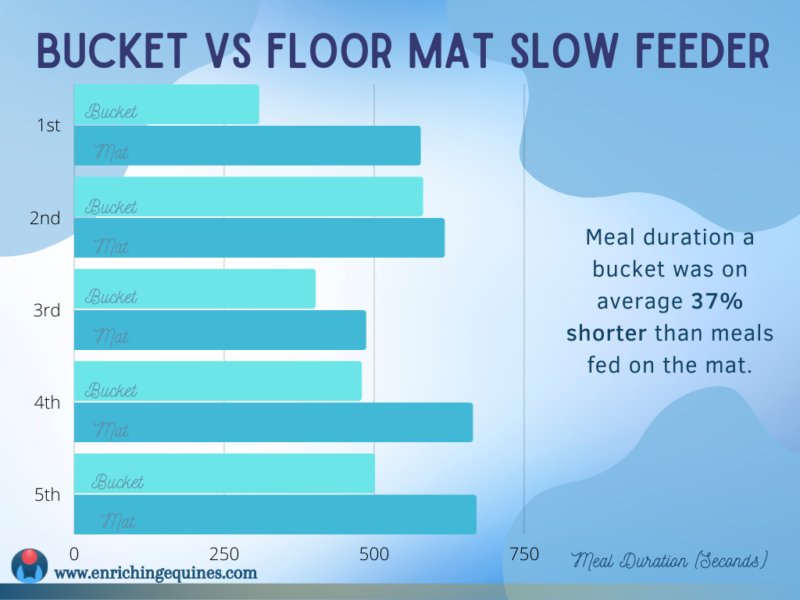
On average, meals were about three minutes longer using the floor mat feeder. Everything else about the trials was equal, so for this horse we can conclude that the textured floormat feeder does produce a longer mealtime.
In fact, meals lasted an average of 37% longer from the floor mat, which is a pretty hefty difference – considering that the horse in this experiment eats a small meal that was only about five pounds when fully soaked with water.
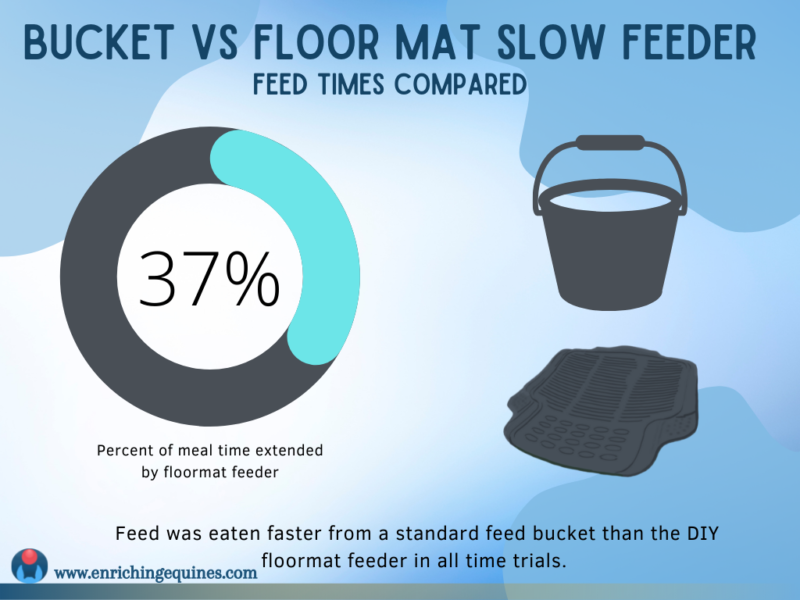
One important thing to note is that the horse only walked away from the bucket when it was completely empty and licked clean. But the floor mat slow feeder always had extra feed stuck in the treads when the horse stepped away.
That’s when the timer stopped, but not when all the feed was gone. Over the course of the day, the horse returned to the mat and scrape and lick the leftovers. That occupied a significant amount of time but wasn’t included in these measurements. So the total feed time from the floor mat is actually much longer than recorded in each trial.
Overall, the DIY slow feeder mat for horses was a big improvement.

Behavior Differences between the Slow Feeder and Bucket
There were more positive differences when using the slow feeder besides just extended feed times. I’ve claimed that using the slow feed mat is a more natural way to feed horses and that it promotes relaxation. Was this true?
The horse in the trial showed a small but consistent amount of head shaking during bucket feeds. This is probably from whisker sensations and an attempt to shake more food into his mouth. He also attempted to turn the bucket over and tip the feed onto the ground.
When eating from the mat, he showed no headshaking and didn’t try to adjust or move the mat or feed.
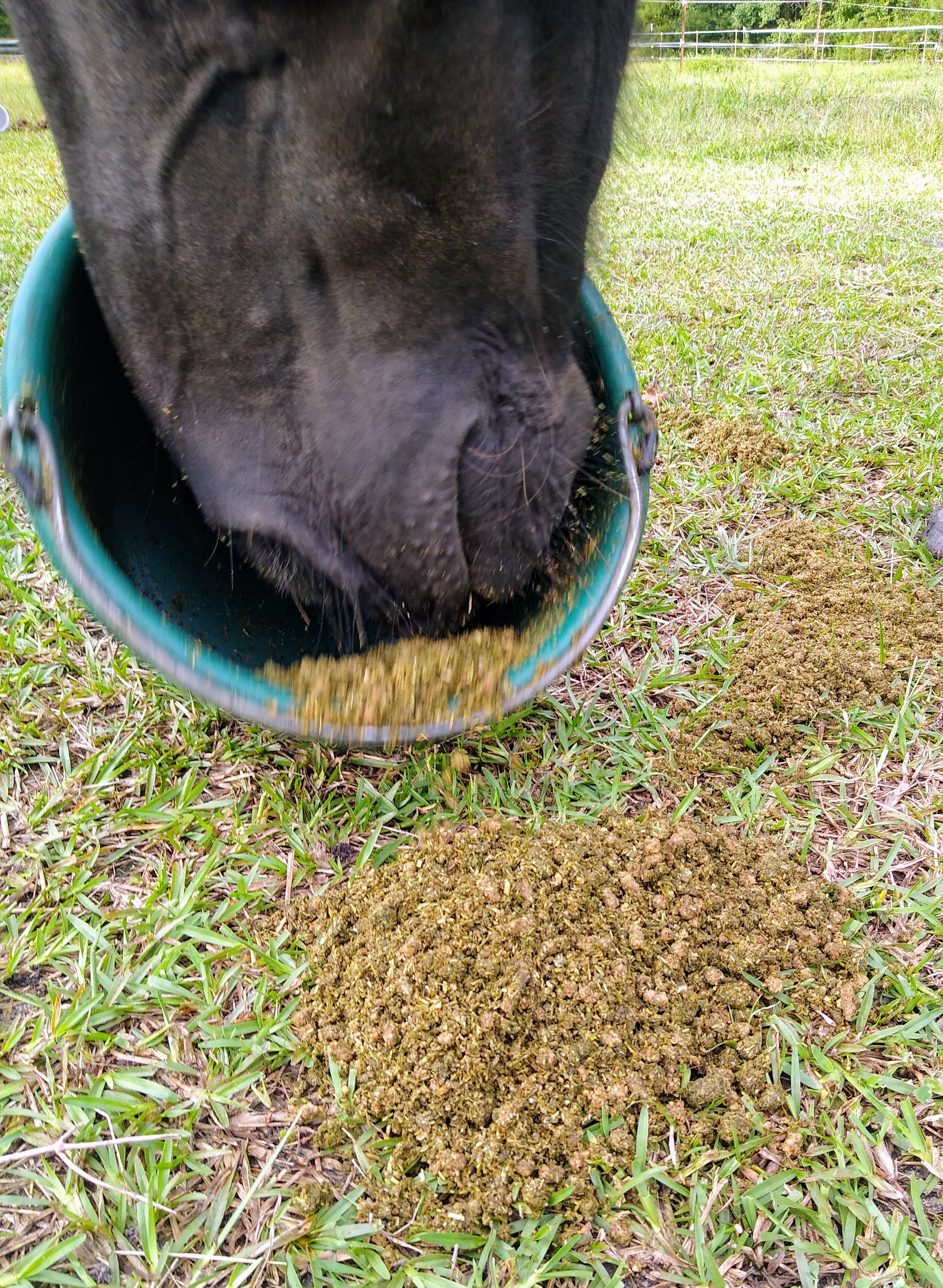
Every horse is an individual, but it seems clear that this horse strongly prefers eating from a flat, unobstructed surface. There were more signs of relaxation while eating from the DIY textured floor mat.
Conclusion: The DIY Slow Feeder Mat for Horses Works
After doing this mini experiment, I’ve really reduced how often I give meals in a bucket. It’s more convenient for me, the human, to mix up the feed and supplements and just take the bucket and drop it off at the pasture. But the horse eats more naturally and quietly from an open, flat surface like the DIY slow feeder mats.
Now the bucket comes out to the paddock and I portion each meal onto several mats placed throughout the pasture. You can do the same thing since automotive floor mats usually come in sets of 4. Multipacks are also great for feeding several horses at once. It’s not just a slower way to eat. Now we never have spilled buckets and feed wasted on the ground, a special concern in regions like mine with sandy soil.
If I’m in a hurry, I may still feed from a pan. But now I only use the wide shallow rubber type – not a bucket or tub-trug style container with high sides. The mealtime isn’t as longs as feeding from the rubber mat, but feed pans keep the food contained and offer a more natural feeding style than a deep bucket. Rubber feed pans have the added benefit of being easy to clean, with their smooth sides.
We’re all interested in providing the best life possible for our equine companions. Feed and mealtimes are important for almost every horse, whether they eat big, high-energy meals or just enough feed to carry supplements. By setting up meals in a thoughtful way, including using slow feed devices like the floor mat slow feeder for horses, we can make meals more relaxed and healthful for our equine friends. Better health, less worry, and less wasted feed – it’s a win for everyone!
Related Enrichment Ideas
If you want to learn more about your horse’s natural feeding behaviors, visit the Feeding and Foraging Behaviors page.
For more slow-feeding enrichment inspiration, try these articles:
Rolling Rubber Treat Toy
The Kong Wobbler for Horses
Flip Up Cups for Pasture Foraging
Snuffle Mats for Horses
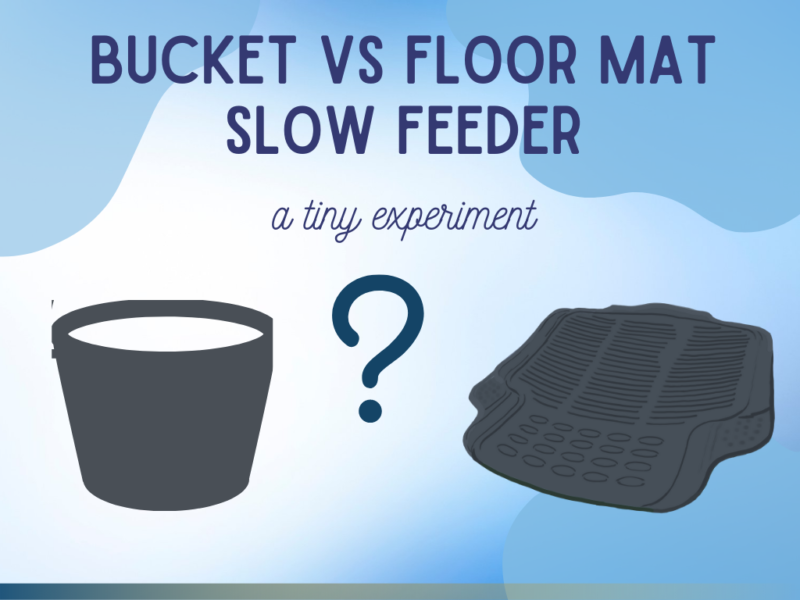
Pingback: DIY Horse Slow Feeder: How to Make a Rubber Feed Mat [Easy] - Enriching Equines